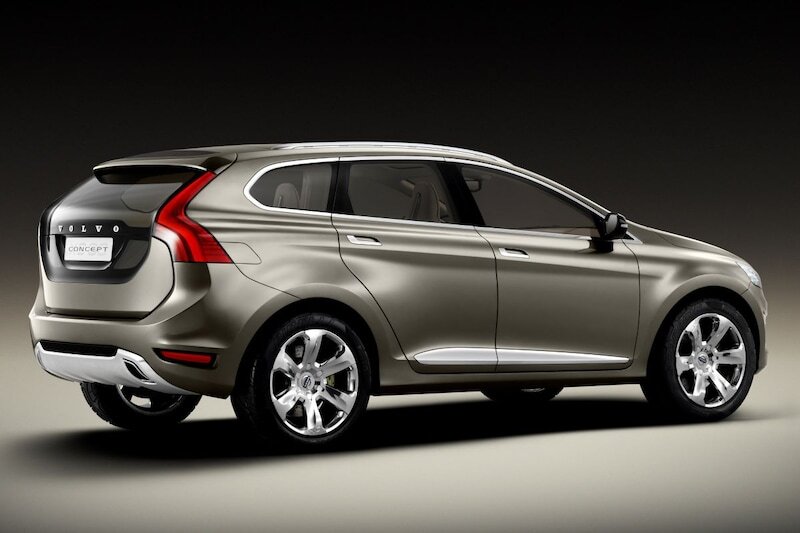
The Volvo XC60 is the most popular Volvo ever. The success story of the XC60 began about eighteen years ago with an SUV with a six-cylinder that ran on bio-ethanol. We take you back to 2007.
The older the XC60 gets, the more the mountains of gold it yields for Volvo shine. The second generation of the XC60 is now eight years old, but despite its age, it is selling like crazy. In the first three quarters of this year, 2,441 units were registered in the Netherlands. This makes it the most popular Volvo in our country after the significantly cheaper and smaller Volvo EX30. Since the introduction of the first generation XC60 in 2008, this model has been virtually the most popular Volvo in the world. The SUV even recently dethroned the 240 as the best-selling Volvo ever. We jump back about eighteen years to see how Volvo wrote the first lines of the XC60 success story.
In December 2006, Volvo released the first photos and bits of information about the XC60 Concept, the study model that made its debut a month later on the show floor of the North American International Auto Show (NAIAS). That was something! Volvo was no stranger to the SUV phenomenon, but was never early with it. While BMW with the X5 and Mercedes-Benz with the ML had had a large luxury SUV on the menu for years, Volvo only came up with an alternative in 2001: the XC90. The XC60 Concept was in a sense exactly what was expected of it: a smaller brother to the Volvo XC90, ready to provide a Swedish response to cars like the BMW X3 – which also came earlier.
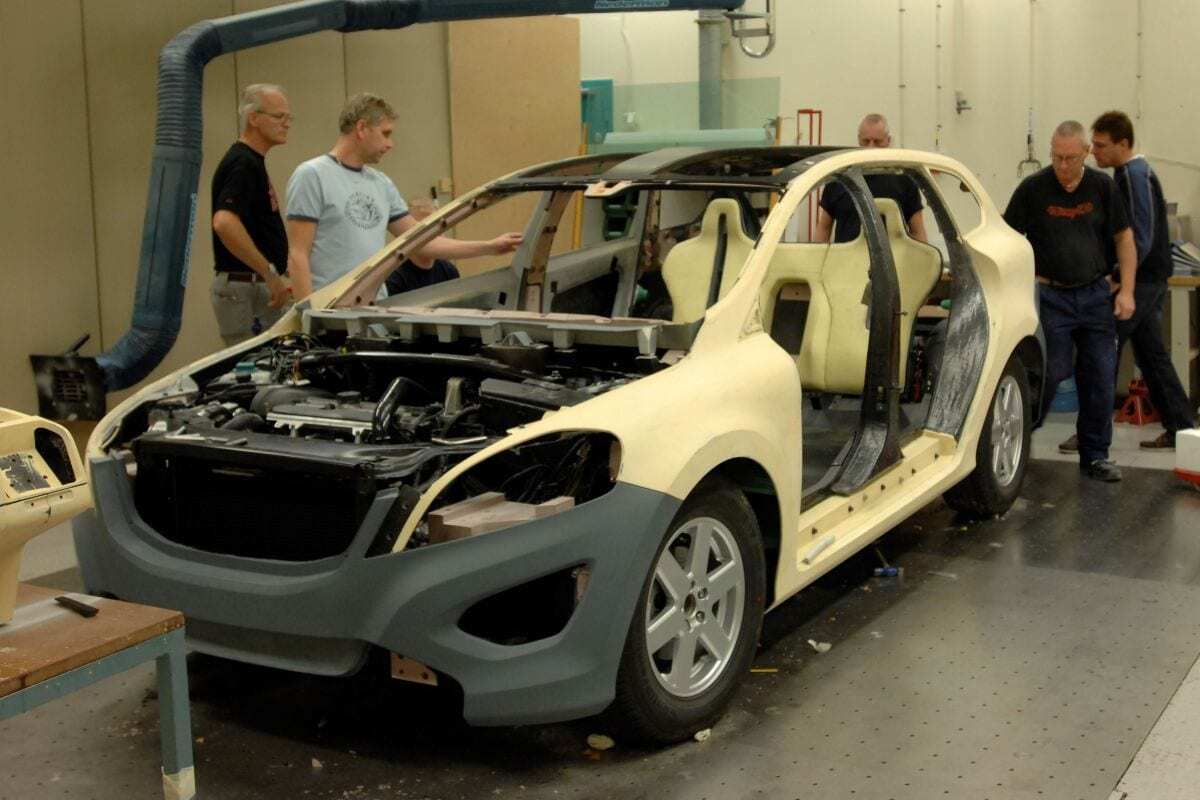
About 70 people created the XC60 Concept in a period of just eight months.
Bioethanol
The Volvo XC60 is currently only available with plug-in hybrid powertrains. The preview of the very first Volvo XC60 was concerned with fuel consumption and emissions in a very different way. The study model had a 3.2-liter six-cylinder under the hood that ran on bio-ethanol. The 3.2 came from the then brand-new second generation Volvo S80 in 2007. Volvo was no stranger to bio-ethanol: the C30, S40, and V50 were already available with so-called FlexiFuel engines that could handle bio-ethanol. However, Volvo had never before prepared an engine with more than four cylinders to burn the substance.
The 3.2 inline-six – which later also came to the production versions of the XC60, XC90, V70/XC70 as a regular gasoline version – delivered 265 hp and 340 Nm in the study model. These forces were distributed to all four wheels. Volvo proudly claimed at the time that the six-cylinder on bio-ethanol emitted up to 80 percent less CO2 than on gasoline. The average consumption on E85: 12.3 l/100 km. That sounds inefficient, but ethanol simply has a lower energy density than gasoline. It was also relatively fast: the study model was supposed to be able to reach 100 km/h from a standstill in 8.2 seconds. Its intended top speed: 228 km/h.
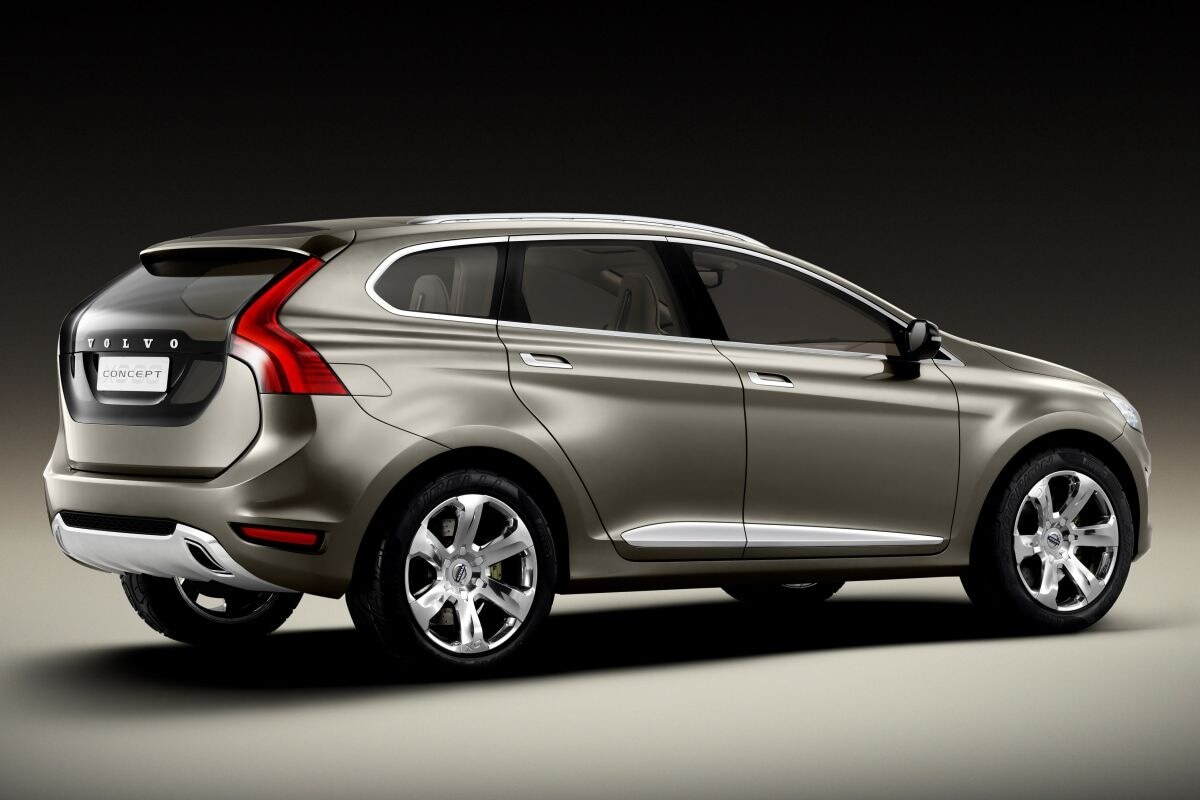
Very coupe-like, according to Volvo in 2007.
Exterior
The exterior of the Volvo “If you say you can recognize a Volvo from a distance of 50 meters now, then you will be able to do so from twice that distance soon,” said then Design Director Steve Mattin in a presentation. He would be proven right.
According to Mattin, the show car, called Tin Bronze, had not only the sturdy, robust body of an XC model, but also the lines of ‘an elegant, sexy coupe’. Beautifully embellished language, of course, although we somewhat understand what the design chief meant. The XC60 Concept had a strongly rising shoulder line and a roof line that sloped slightly downward towards the rear. The window area in between became significantly lower towards the rear. Much remained intact in the final production version that appeared in 2008, although the coupe character praised by Mattin was significantly reduced.
A remarkable design element that would not make it to the production stage was the rear window that ran deep down into the tailgate. Something similar was known from the C30 at the time, but we did not see it on the car that appeared in showrooms a few years later. Speaking of the tailgate: there was something else remarkable about it. The tailgate consisted of two parts that opened independently of each other. The lower half of the gate ‘slid’ up in a sense. That too turned out to be purely a gimmick that would not outgrow the concept stage.
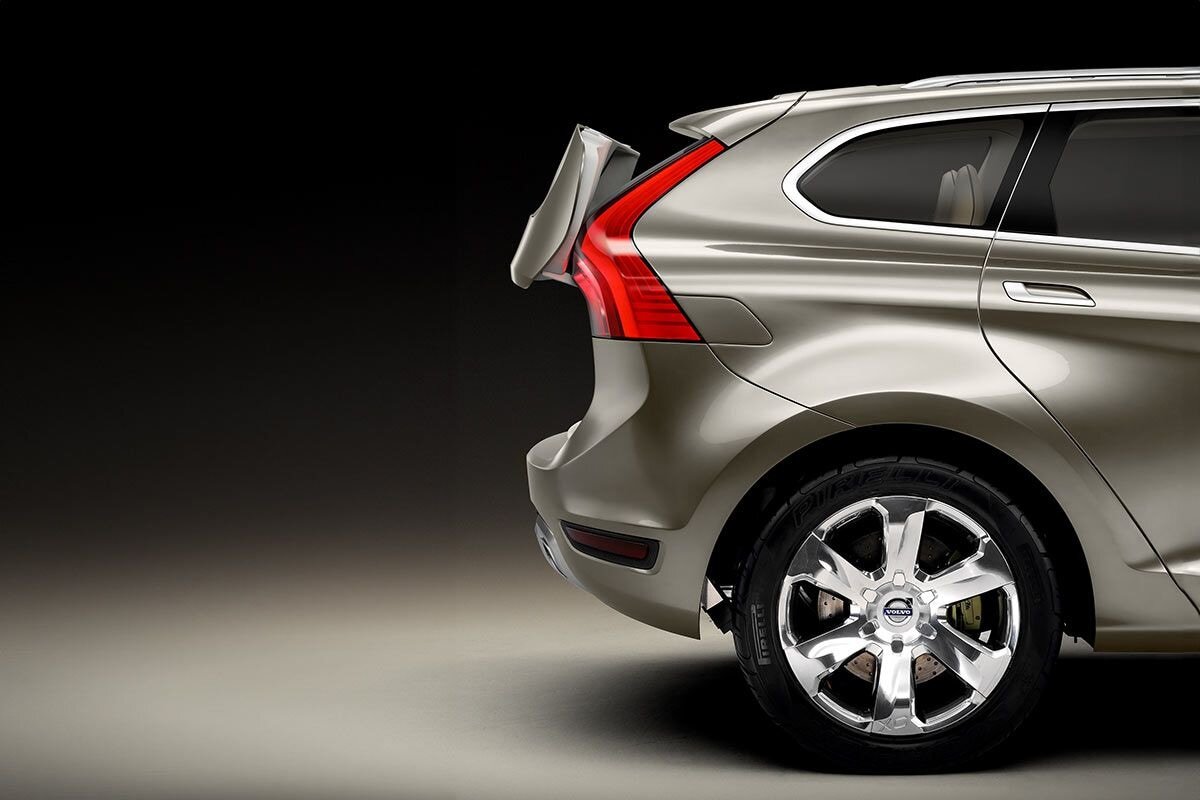
Volvo XC60: this tailgate did not make it to the production stage.
Interior
The interior that Volvo folded into the XC60 Concept in 2006, like the exterior, gave a good indication of what to expect from the inside of the Volvo XC60. The basic shape of the dashboard remained intact. Just like in the C30, you also found a ‘floating center console’ in the XC60 Concept. The workspace was covered with leather and aluminum and was well-lit thanks to the large glass roof. The lower half of the interior was finished in ‘espresso brown’, the upper part significantly lighter. Even the basic shape of the partly digital instrumentation would – albeit only later – find its way to the XC60. It consisted of a centrally placed analog speedometer and was flanked by two digital ‘wings’ in which other information was displayed. It was supposed to somewhat resemble a – brace yourself – bumblebee. About the center console, Volvo also claimed something special. According to the Swedes, its white surface was inspired by the iPod. Are we feeling old yet? A fun detail is that most of the layout of the ‘illuminated’ buttons would largely return in physical form in the production version.
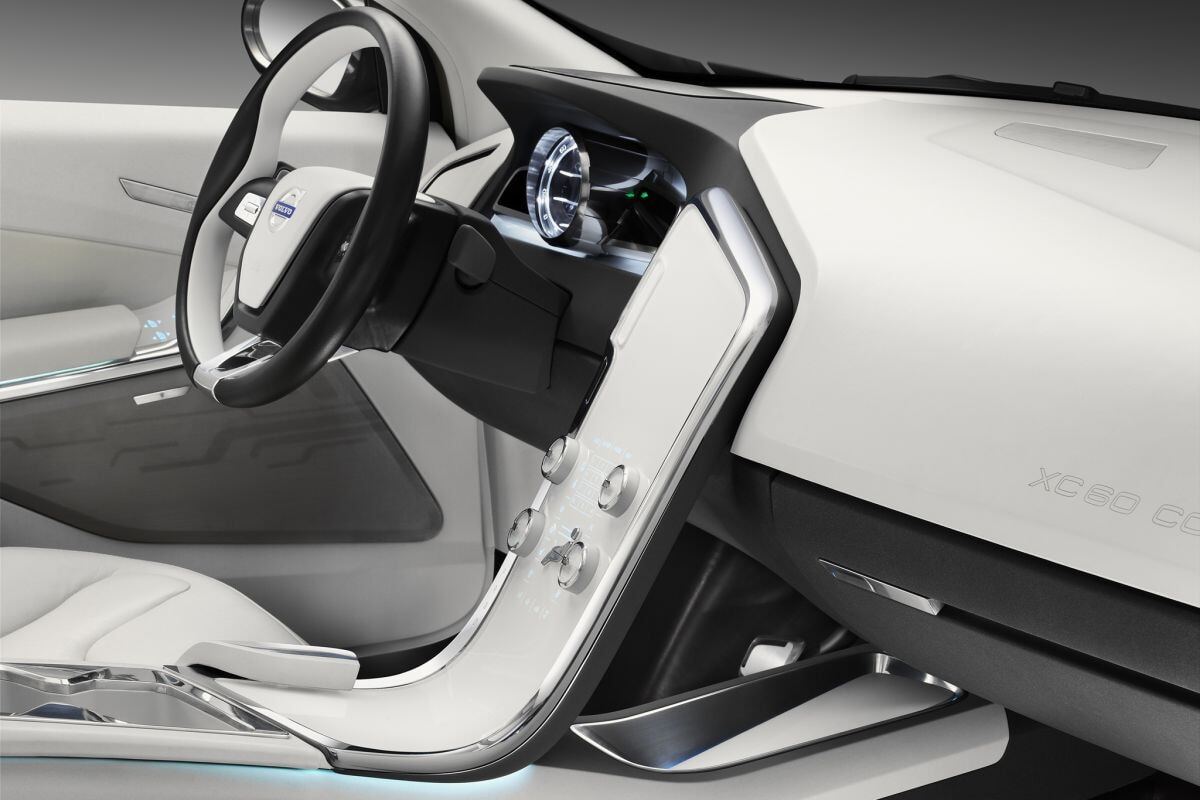
Volvo XC60 Concept interior: iPod influences!
Plugin Hybrid
There would be no plug-in hybrid variant of the first generation Volvo XC60. Nevertheless, in 2012, Volvo used an XC60 to look ahead (photos 25 to 32) to its first plug-in car: the Volvo V60 Plug-in Hybrid. That would become a true tax benefit hit.
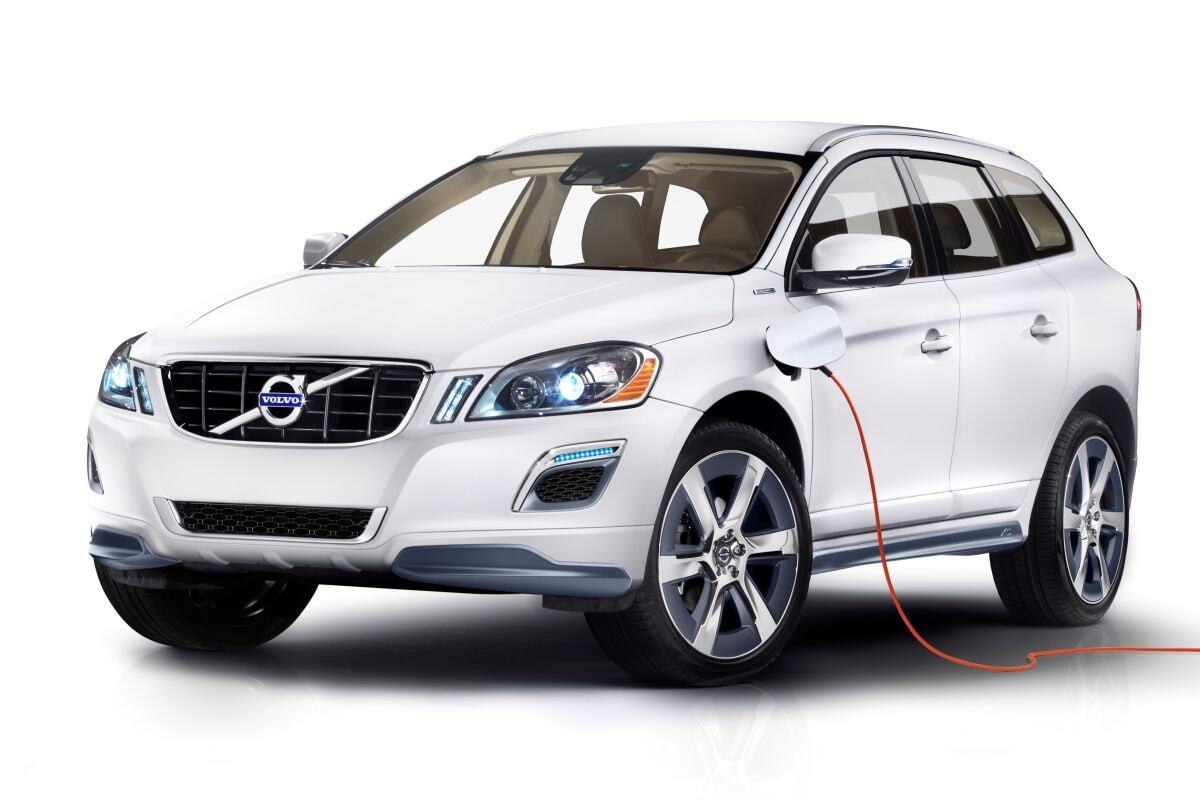
The Volvo XC60 Plug-in Hybrid Concept from 2012 looked ahead to the first ever Volvo with a plug: the V60 Plug-in Hybrid.
XC60 Future
The Volvo XC60 seems to have many more years ahead. Earlier this year, the SUV was updated. An electric XC60 is not coming, but an electric equivalent with a different name is! In January, the Swedes will unveil the Volvo EX60. More on that later!